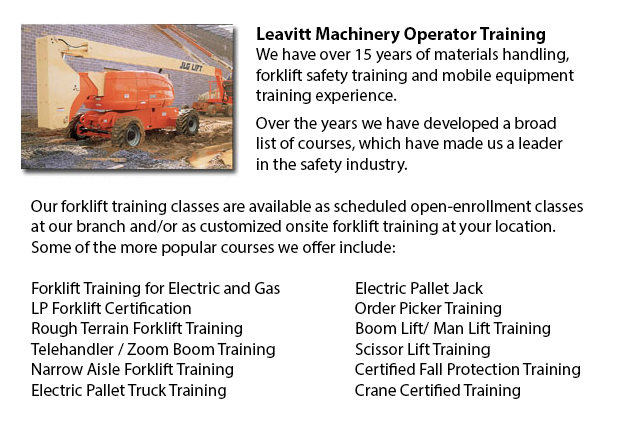
Grande Prairie Aerial Platform Training - Aerial lift trucks can be used to accomplish certain unique duties executed in hard to reach aerial spaces. A few of the odd jobs associated with this kind of jack include performing daily maintenance on structures with prominent ceilings, repairing telephone and power cables, raising heavy shelving units, and trimming tree branches. A ladder might also be used for some of the aforementioned tasks, although aerial hoists offer more safety and stability when correctly used.
There are a handful of different models of aerial hoists available, each being capable of performing moderately different tasks. Painters will often use a scissor lift platform, which is able to be used to reach the 2nd story of buildings. The scissor aerial jacks use criss-cross braces to stretch and lengthen upwards. There is a platform attached to the top of the braces that rises simultaneously as the criss-cross braces raise.
Cherry pickers and bucket trucks are another variety of the aerial hoist. Normally, they contain a bucket at the end of a long arm and as the arm unfolds, the attached bucket lift rises. Forklifts utilize a pronged arm that rises upwards as the lever is moved. Boom hoists have a hydraulic arm that extends outward and raises the platform. All of these aerial lift trucks require special training to operate.
Through the Occupational Safety & Health Association, also labeled OSHA, instruction courses are offered to help make certain the employees meet occupational values for safety, machine operation, inspection and repair and machine cargo capacities. Workers receive qualifications upon completion of the course and only OSHA qualified employees should run aerial lifts. The Occupational Safety & Health Organization has established rules to maintain safety and prevent injury while utilizing aerial hoists. Common sense rules such as not using this piece of equipment to give rides and ensuring all tires on aerial lifts are braced in order to hinder machine tipping are noted within the rules.
Sadly, data illustrate that over 20 operators pass away each year when running aerial lift trucks and 8% of those are commercial painters. Most of these incidents are due to inadequate tire bracing and the lift falling over; for that reason several of these deaths were preventable. Operators should ensure that all wheels are locked and braces as a critical security precaution to prevent the instrument from toppling over.
Marking the surrounding area with visible markers need to be used to safeguard would-be passers-by so that they do not come near the lift. Additionally, markings should be set at about 10 feet of clearance between any utility cables and the aerial hoist. Hoist operators should at all times be well harnessed to the hoist when up in the air.
-
Grande Prairie Overhead Crane Safety Training
Grande Prairie Overhead Crane Safety Training - Overhead crane safety training equips operators with skills and knowledge about crane safety measures, accident avoidance, materials handling, and machine and stock protection. Trainees will learn the k... More -
Grande Prairie Crane License
Grande Prairie Crane License - The crane operator needs to have been certified with a crane operator license or certification. To be able to practice as an operator of a crane, the qualifications are considered mandatory. Obtaining a license includes... More -
Grande Prairie Heavy Equipment Training
Grande Prairie Heavy Equipment Training - The two most common types of heavy equipment training are classed into the categories of machines; equipment which is fashioned with rubber tires or those with tracks. The tracked vehicle are heavy duty machi... More -
Grande Prairie Skid Steer Ticket
Grande Prairie Skid Steer Ticket - On a skid-steer loader, the lift arms are beside the driver along with pivot points at the back of the driver's shoulders. This makes them different compared to a conventional front loader. Because of the operator's... More -
Grande Prairie Zoom Boom Ticket
Grande Prairie Zoom Boom Ticket - Zoom Boom Training is intended to train operators on variable reach forklifts. The objectives of the training are to impart an understanding of the physics of the equipment, and to be able to outline the operator's t... More -
Aerial Lift / Boom Lift / Man Lift / Scissor Lift Certification in Grande Prairie
Scissor lifts are lift truck tables that raise materials and people and supplies vertically. They are usually used in commercial, industrial and construction environments. A common use of scissor hoists is for lifting or lowering construction supplie... More -
Grande Prairie Aerial Lift Safety Training
Grande Prairie Aerial Lift Safety Training - Each and every year, there are roughly 26 construction fatalities due to the utilization of aerial lifts. Most of the craftsmen killed are laborers, electrical workers, ironworkers, carpenters or painters.... More -
Grande Prairie Fall Protection Ticket
Grande Prairie Fall Protection Ticket - The number one reason of death within the construction business come from fall-related incidents. There is more chance for fall accidents depending upon the kinds of work being done in your workplace. Therefore... More

Forklift Certification Grande Prairie
TOLL FREE: 1-888-254-6157
Grande Prairie, Alberta
forkliftcertificationgrandeprairie.com
Email Us
About Us


